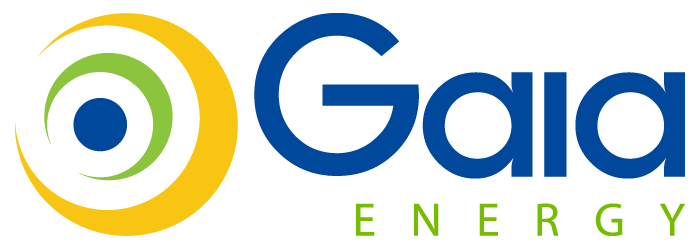Wind power is coming of age in Africa and is fast becoming directly competitive with traditional energy sources. Driving down the levelised cost of electricity through wind energy is a key target for Siemens, who over the past 30+ years has accumulated millions of hours of service and operational in-house experience, as well as global in depth market knowledge. Drawing on this knowledge, Janek Winand, vice president of Wind Power and Renewables Southern and Eastern Africa, examines the growth of the renewable energy market in Africa and specifically wind power.
The renewable energy market in Africa is steadily growing in all disciplines; however, there is keen interest to harness the continent’s wind resources, with large-scale projects making headline news in South Africa, Kenya, Egypt and Morocco to name a few – in view of this, what are the trends driving Africa’s wind market?
Africa is the continent with the highest growth potential for renewable energy. Already Africa is one of the markets with the highest growth rates in the world; albeit overall numbers are still low. South Africa is undoubtedly the major contributor on the scene with the success of the globally lauded Renewable Energy Independent Power Producers Procurement Programme (REIPPPP). There is an appetite from countries like Morocco and Egypt to duplicate a similar success story in the field of renewable energy and Siemens has responded to their demands through customised solutions and supply chain infrastructure.
Furthermore, there are also markets that are opening up – like Kenya, Ghana, Tanzania and Nigeria just to name a few. We have identified Kenya in particular as a promising supporter of wind power in East Africa due to proven successful closure of the country’s large-scale wind power projects. Africa is the most exciting market in the world because it offers the unique opportunity to start with renewable energy from relatively low stages of electrification, thus leapfrogging older technologies. There is an opportunity to learn from the first world countries who are paying a high bill to move from existing fossil power generation towards an increasing share of renewable energy – in part driven by the Paris Agreement to reduce CO2 emissions and keep global warming to below 2o C (3.6o F), but also due to the fact that renewable energy, especially wind power, is becoming very competitive compared to fossil power generation.
As mentioned above, the South African REIPPPP is lauded as a global success and best practice; what has made this renewable energy auction so successful?
Indeed, it is a great success. I believe that transparency and certainty has helped a great deal. This programme has demonstrated that the public private partnership model can best fast track the delivery of much needed large-scale infrastructure projects. In the case of the REIPPPP, the process, checks and balances gave investors confidence in government; the IPP office is handling the programme very well and this has attracted a plethora of players into the South African market. With increased vendors, comes healthy competition and this has helped reduce the cost of renewable energy for consumers. That said, I believe that government will have to put in place mechanisms that further help stimulate and support localisation. Here, I’m referring not only to local content targets, but also to ensuring a predictable and trusted demand, as this is key for investment decisions to benefit South Africa. Furthermore export credits would support this development.
One argument against renewable energy resources is that it can’t provide baseload power capacity unless it has powerful storage capacity built in – how can this challenge be overcome?
Baseload power, as we know it today, is driven by demand and supported largely by non-renewable energy sources. This baseload demand, especially in developed countries, won’t change overnight. Therefore, I believe that the change to renewable energy sources will have to be realised in steps; a diversified energy mix will support this development especially in countries that hugely depend on non-renewables. As a second step, which has already started, the demand profile will change to develop together with the supply consisting of a much greater share of variable sources such as solar and wind. Ultimately smart grid solutions combined with more flexible generation technologies and economical storage technologies will form the future power system. I’m excited to be part of this development and to work for a company that has identified this trend at a very early stage and offers leading solutions in any of these areas.
Africa is lucky in that it has a good mix of resources – sun, wind, gas, water, and biomass energy sources that are in abundance; these can complement one another and make the change much easier.
Even though the wind turbine tower, blades and turbine fit neatly into what appears to be a simple structure, wind energy technology is extremely complex – what technical solutions has Siemens brought to the market to reduce the complexity and ultimately reduce costs?
Innovation forms the cornerstone of business operations at Siemens. In wind turbine design, it is crucial to take a holistic view that incorporates the design and construction, materials, processes, manufacturing, and installation. Our gearless Direct Drive solutions, D3 and D6, carefully balance all these factors in a compact system. Service personnel are directly involved in the development process, to ensure optimal working conditions and serviceability. Reducing the levelised cost of electricity remains the overall target, but ultimately ‘society’s cost of electricity’ should also be taken into consideration, as this would include impact on employment as well as environmental and geopolitical risks – to name a few factors which are not considered when comparing the total cost over the lifetime of the electricity produced.
In the utility sector, maintaining assets and prolonging their lifespan is important – in your experience, what are the main challenges around wind turbine maintenance and the optimal solutions?
Notwithstanding the reliable track record of gearboxes over the years, they remain the most volatile component in wind turbines. It follows that eliminating the gearbox reduces complexity and can further increase reliability. Replacing the gearbox, the coupling, and the high-speed generator with a low-speed generator eliminates two-thirds of the conventional drive-train arrangement. As a result, the number of rotating and wear-prone parts is greatly reduced compared to a geared machine. For optimum efficiency, the solution that Siemens advises is a permanent magnet generator. The main advantage of permanent magnet generators is their simple and robust design that requires no excitation power, slip rings, or excitation control systems. This leads to high efficiency even at low loads. The removal of the gearbox, together with other design simplifications, has given service technicians more space inside the nacelle, making key components more easily accessible. Furthermore, Siemens is investing significant resources in developing control mechanisms to predict and control the lifetime of the wind turbine generators at a specific site. By doing this the business case can either accelerate or be prolonged, depending on the respective FiT or PPA.
The development of micro-grids using renewable energy and hybrid solutions is seen as the solution to increase rural electrification rates in Africa – what role can wind energy have in this market?
Wind turbines are unmanned powergeneration units that are often located in remote areas, making them uniquely positioned to increase rural electrification in Africa. Wind turbine generators is an ideal technology to be integrated into a hybrid system. In addition, with Siemens’ remote monitoring and diagnostics services, engineers keep their eyes and ears on the customers’ wind turbines worldwide and resolve certain alarms with no need for a service team to visit the site. In addition, the company’s diagnostic experts can detect potential errors before they become serious. Siemens’ service programmes incorporate both remote monitoring and diagnostics to intelligently optimise turbine performance.
A featured element of our remote diagnostics services is Turbine Condition Monitoring, which delivers precise vibration measurements on important turbine components like the gearbox, generator, and main shaft. When a value reaches a critical range, the system automatically triggers an alarm. This, however, does not mean that a technician needs to be deployed right away, because most problems can be fixed remotely, or proactively scheduled.
Originally posted on: www.evwind.es

